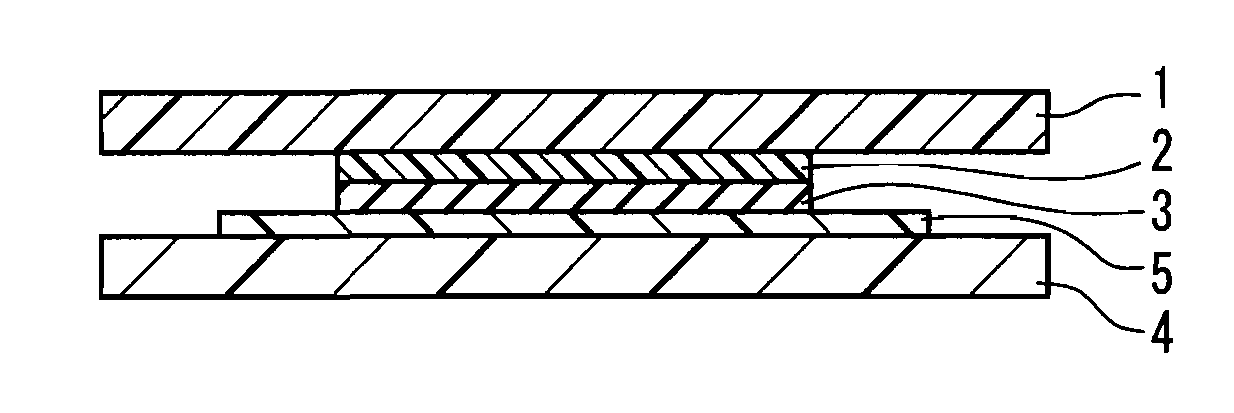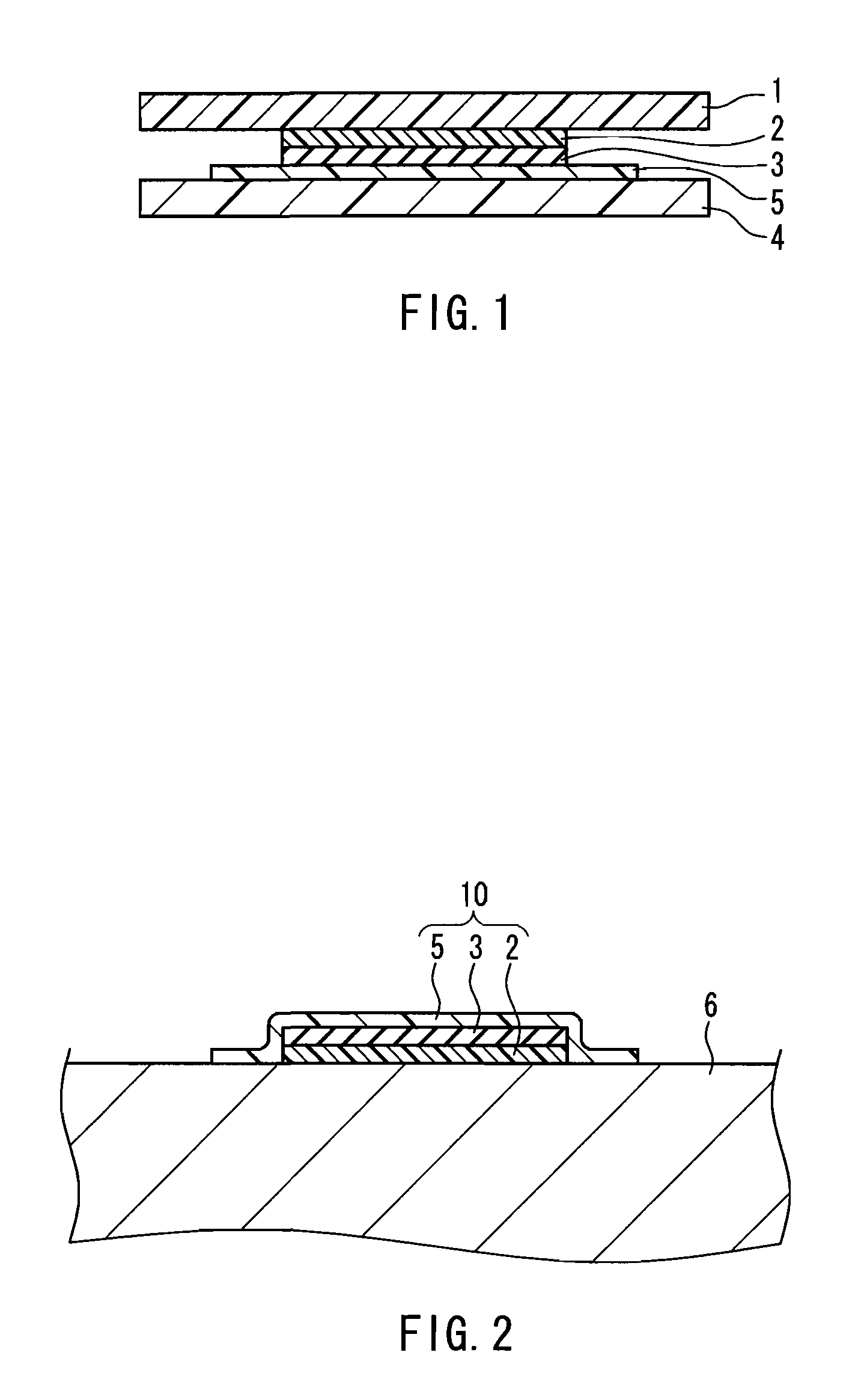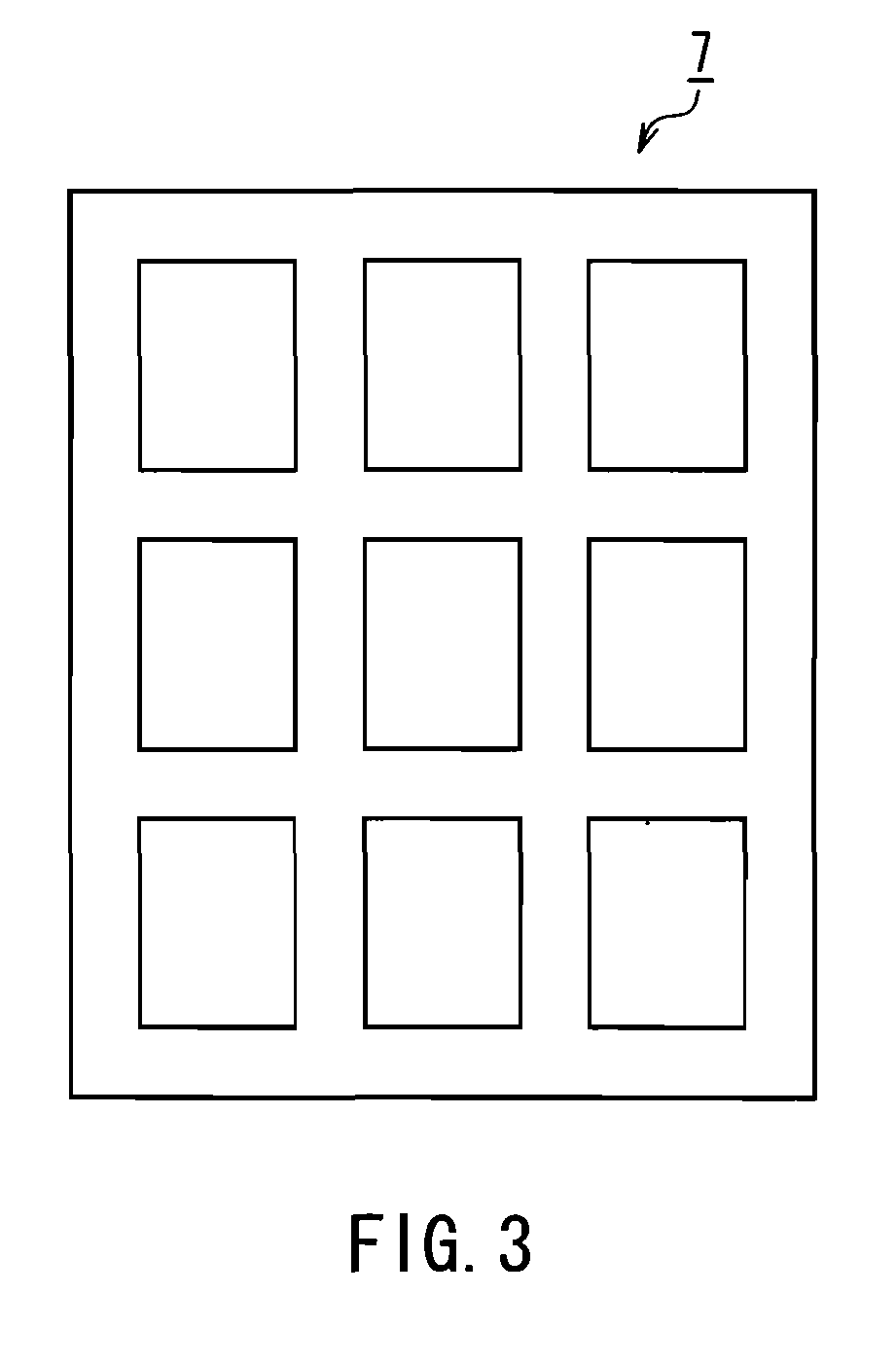Thermal diffusion sheet and method for mounting the same
a technology of diffusion sheet and thermal diffusion plate, which is applied in the direction of paper/cardboard containers, semiconductor/solid-state device details, other domestic articles, etc., can solve the problems of reducing the adhesive strength, short circuit, and brittleness of the graphite sheet itself, and achieves reliable transfer of heat to the radiator plate, good thermal conductivity, and low cost
- Summary
- Abstract
- Description
- Claims
- Application Information
AI Technical Summary
Benefits of technology
Problems solved by technology
Method used
Image
Examples
examples
[0047]Hereinafter, the present invention will be described in detail by way of examples. The present invention is not limited to the following examples.
[0048]The thermally conductive adhesive layers were prepared in the following manner.
[0049](Thermally Conductive Adhesive Material A)
[0050]200 parts by weight of alumina (AS20 manufactured by SHOWADENKO K.K.) and 5 parts by weight of iron oxide were added to 100 parts by weight of silicone polymer (XE14-C2068 manufactured by Momentive Performance Materials Inc.), and the mixture was stirred with a planetary mixer for 10 minutes while reducing foam, thus producing a composition.
[0051](Thermally Conductive Adhesive Material B)
[0052]200 parts by weight of alumina (AS20 manufactured by SHOWADENKO K.K.), 5 parts by weight of crosslinking agent (CR 300 manufactured by KANEKA CORPORATION), 0.3 parts by weight of platinum catalyst (PT-VTSC-3.0 IPA manufactured by UMICORE JAPAN K.K.), 0.1 parts by weight of retardant (SURFYNOL 61 manufactured...
examples 1 to 4
[0066]In Examples 1 to 4, the graphite sheet was sandwiched between the thermally conductive adhesive layers that were the same in type but different in size. The thermally conductive adhesive layer made of the material A (Examples 1 and 2) or B (Examples 3 and 4) was formed on a polyester film that had been subjected to a release treatment with fluorine, and was laminated with the graphite sheet. Then, the thermally conductive adhesive layer made of the material A (Examples 1 and 2) or B (Examples 3 and 4) with a thickness of 0.25 mm was disposed on the graphite sheet. Specifically, referring to FIGS. 4A and 4B, the thermally conductive adhesive layer 2 was formed on the polyester film 1. The graphite sheet 3 having the same size as the thermally conductive adhesive layer 2 was aligned with and laminated on the thermally conductive adhesive layer 2. Moreover, the thermally conductive adhesive layer 5 was formed on a polyester film that had been subjected to a release treatment with...
examples 5 and 6
[0077]In Examples 5 and 6, the graphite sheet was sandwiched between the thermally conductive adhesive layers that were different in both type and size. The thermally conductive adhesive material D was applied to the graphite sheet by knife coating, air-dried for 30 minutes, and hardened at 120° C. for 10 minutes. The resultant adhesive layer had a thickness of 50 μm. Then, a fluorine release film was attached to the adhesive surface of the adhesive layer. This was die-cut from the graphite sheet side with a punching die 7 shown in FIG. 3 by using the polyester film (i.e., the fluorine release film) on the adhesive layer as a release liner. Subsequently, burrs were removed. FIGS. 4A and 4B are a plan view and a cross-sectional view of the laminated sheet thus produced, respectively. In FIGS. 4A and 4B, reference numeral 1 denotes the fluorine-treated polyester film, 2 denotes the thermally conductive adhesive layer made of the material D, and 3 denotes the graphite sheet.
[0078]The t...
PUM
| Property | Measurement | Unit |
|---|---|---|
| thermal conductivity | aaaaa | aaaaa |
| adhesive strength | aaaaa | aaaaa |
| thermal conductivity | aaaaa | aaaaa |
Abstract
Description
Claims
Application Information
 Login to View More
Login to View More - R&D
- Intellectual Property
- Life Sciences
- Materials
- Tech Scout
- Unparalleled Data Quality
- Higher Quality Content
- 60% Fewer Hallucinations
Browse by: Latest US Patents, China's latest patents, Technical Efficacy Thesaurus, Application Domain, Technology Topic, Popular Technical Reports.
© 2025 PatSnap. All rights reserved.Legal|Privacy policy|Modern Slavery Act Transparency Statement|Sitemap|About US| Contact US: help@patsnap.com



